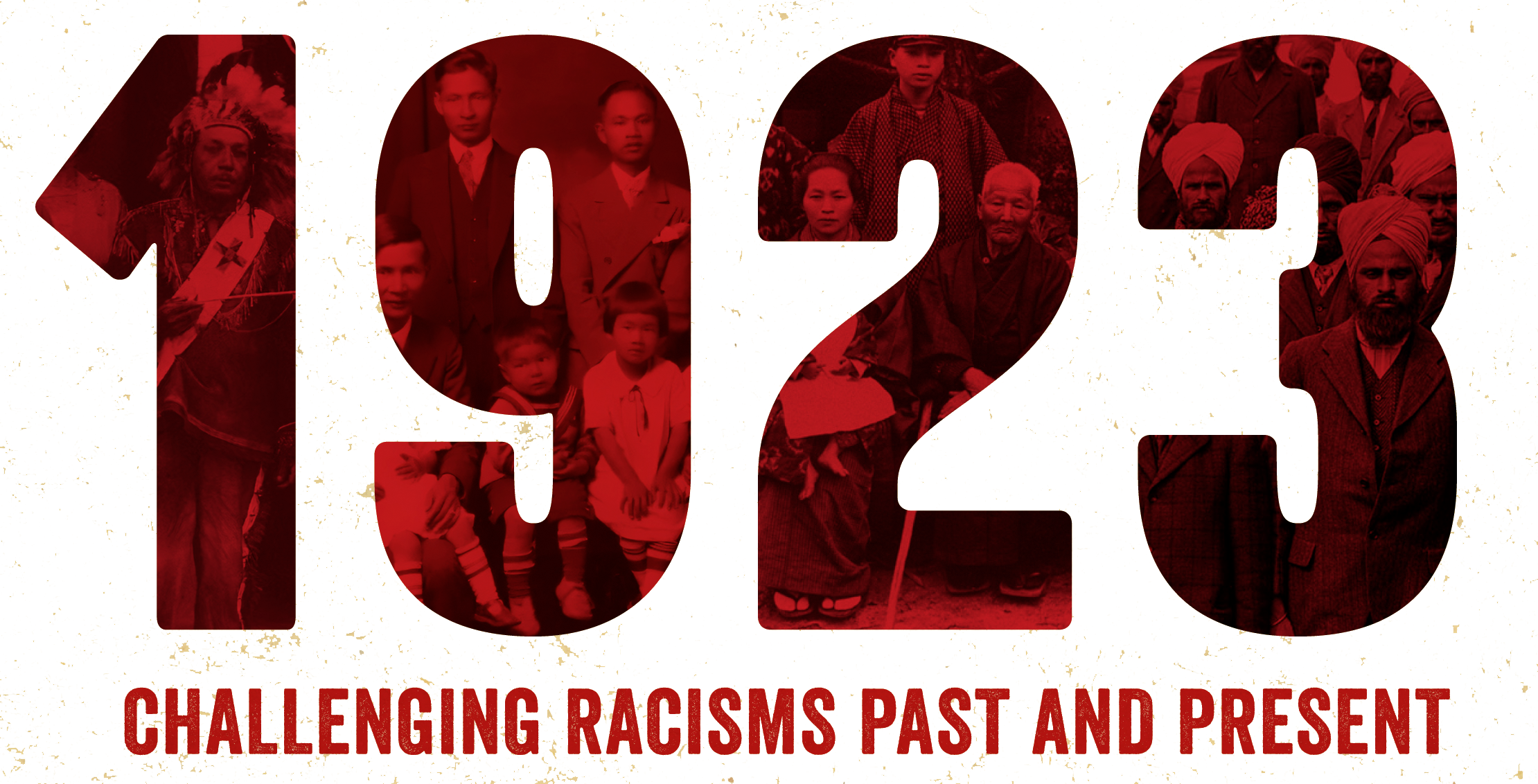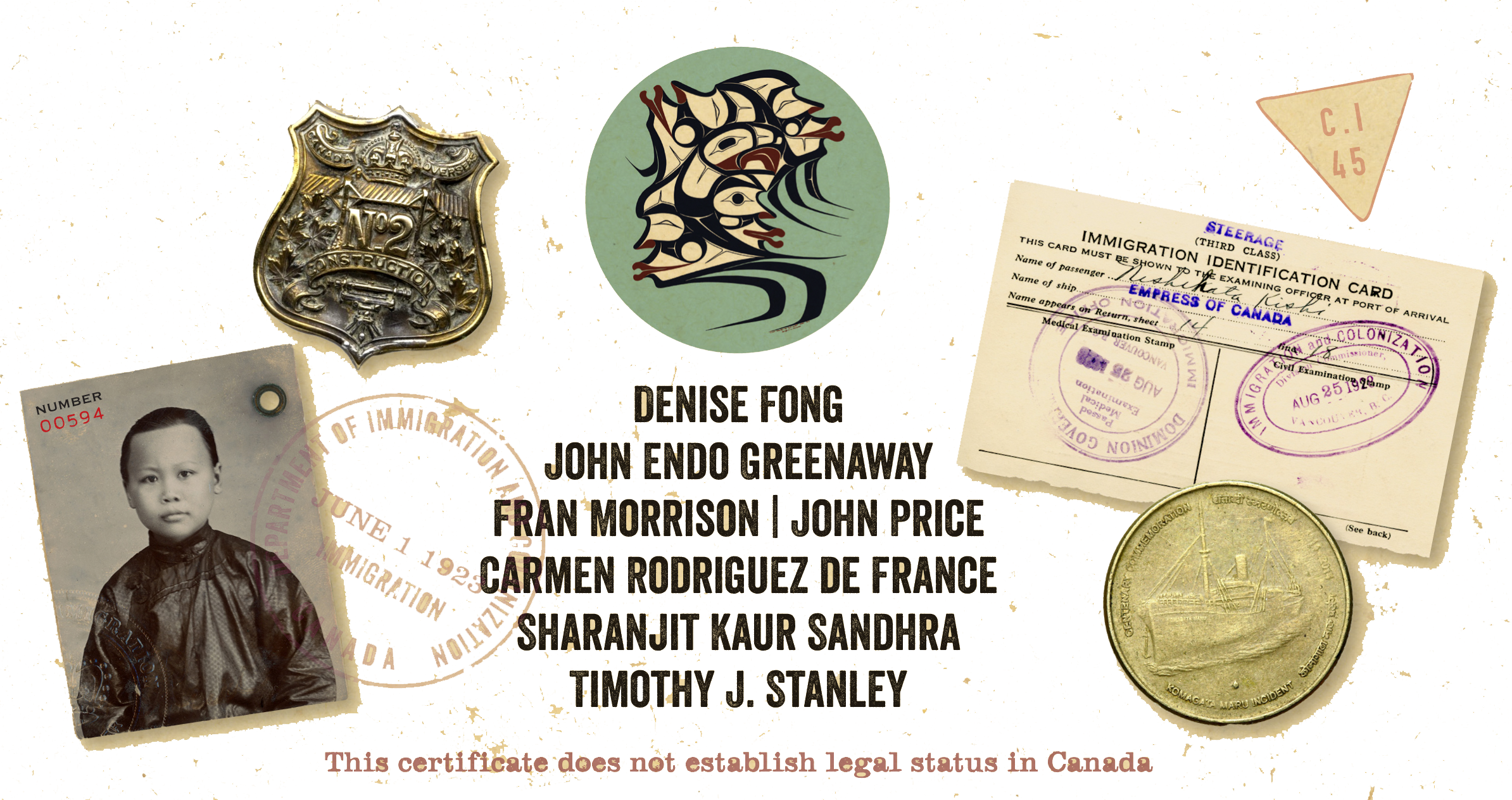Challenging Racisms Past & Present: 1923






One hundred years ago, the Canadian government passed “An Act Respecting Chinese Immigration” that came into effect on July 1, 1923. Known as the Chinese Exclusion Act, it was an overtly racist law prohibiting the arrival of newcomers from China. It also required all people of Chinese heritage, including the Canadian- born, to register with the federal government in order to stay in the country.
Chinese Canadian communities across the country mobilized to lobby against the act but in the end their efforts failed to stop its passage. Thus, July 1 came to be known as “Humiliation Day” for many Chinese Canadians. The impact of this legislation would have dreadful, long-term impacts. This year, many Chinese Canadian community organizations, including the new Chinese Canadian Museum of British Columbia, will mark this difficult anniversary.
In preparing this booklet we reviewed what happened in the ten years preceding the 1923 legislation to better understand its origins, how it related to Indigenous, Black, and other racialized communities, and to Canada’s history of settler colonialism. What we found was startling.
The 1923 Act was passed by the Canadian parliament. The pressure to pass this legislation, however, came from a racist coalition of business associations, politicians, the media, white women’s groups, and labour organizations in “British Columbia,” working with federal politicians. This bloc coalesced in 1920 while resisting an attempt by Japanese Canadian veterans to secure their right to vote. Its formation coincided with the Borden government’s drive to reinforce state control over Indigenous peoples and social movements, a process that continued under the King government, elected in late 1921. The results were devastating for all racialized communities and for labour.
However, inspiration can be found in this otherwise difficult story. The white backlash that arose in 1920 was, in fact, a reaction to the newly won confidence and organizing that Indigenous peoples, radical labour, Black, Asian, and other racialized communities were asserting after the 1907 race riots. The year 1919 was a watershed in that regard. These movements provide a precious legacy for social movements today. Yet, isolated one from the other, they were unable to overcome the forces arrayed against them.
Much has changed since the Chinese Exclusion Act of 1923. The immigration colour bar has been pushed back, changing Canada’s demographics. Those of non- European origin make up an increasing proportion of the population, making significant contributions to this country. The growing Black and Asian Canadian presence inspired the anti-racist actions of 2020 (Black Lives Matter, Stop Anti-Asian Racism), alongside movements against Islamophobia. The Indigenous resurgence of the past decade continues, causing many to rethink Canada’s history.
As in the past, however, such movements are also spawning resistance. We see growing antagonism, often taking the form of right-wing populism, or white nationalism. To be sure, this backlash draws inspiration from white nationalism in the United States. But it arises out of Canada’s own specific history as a liberal state that tries on the one hand to co-opt dissenting communities into the structures of settler colonialism, or violently represses them. In that sense, 1923 is a cautionary tale: To succeed, anti-racist and other social movements need to nurture unity, internally and across communities, to defeat the forces arrayed against them. We hope this booklet will add to ongoing conversations, furthering the relationships necessary to bring us to a better place.
This booklet is organized in six chapters, organized chronologically. In conclusion we make a number of observations relating this past to the present.
A Caution: In describing the historical dynamics of the past, we use racial categories that may mask the huge diversity within groups or communities. In following the seam of resistance to racism we are being selective in the stories we choose. Not every story can be told, nor every group represented. We hope this publication will facilitate the telling of a broader group of stories and will be a step in the development of inclusive, intersectional analyses to support decolonization.
Denise Fong is a Ph.D. candidate and Public Scholar at the University of British Columbia where her research focuses on community engaged research, critical museology and Chinese Canadian history. She is the co-curator of two award-winning exhibitions: A Seat at the Table - Chinese Immigration and British Columbia (Museum of Vancouver and Chinese Canadian Museum of BC) and Across the Pacific (Burnaby Village Museum).
John Endo Greenaway is the project’s graphic designer/ advisor. He is a designer, writer, taiko player and composer based in Port Moody, BC. He began exploring his mixed Japanese Canadian heritage as a founding member of Canada’s first taiko group in 1979, and has delved even deeper over the past 30 years as editor of The Bulletin: a journal of Japanese Canadian community, history & culture. He is a co-author of the 2017 book Departures: chronicling the expulsion of the Japanese Canadians from the west coast 1942-1949.
Jessica MacVicar is passionate about supporting initiatives that create bridges between academia, social justice & anti-racism, and accessible public education. For the past several years she has lent her skills in project coordinating, media development, event planning, and research towards academic projects that embody these principles. She is beginning an interdisciplinary MA program in Fall 2023.
Fran Morrison has been a board director of BC Black History Awareness Society since 2010. She manages content research and development for the Society’s website and designs and delivers projects and presentations on early BC Black History. Fran comes from Nova Scotia and is a descendant of Black Loyalists who came to Canada in 1783 and Underground Railroad travelers from Maryland in 1823. Attaining the PMP® designation, she worked as a project manager in the private and public sector for more than 25 years.
John Price is professor emeritus in history, University of Victoria. He is co-author with Christine O’Bonsawin of a special volume of BC Studies 204 (Winter 2019/20) in which he and Nicholas XEMŦOLTW̱ Claxton co-authored “Whose Land Is It? Rethinking Sovereignty in British Columbia.”
Dr. Carmen Rodríguez de France was born and raised in Monterrey, México, and embraces her heritage from the Kickapoo nation in North-eastern Mexico. Carmen is a member of the Department of Indigenous Education in the Faculty of Education at the University of Victoria. Her career in education spans thirty-five years previously working as a school teacher, and most recently with pre- service teachers, Indigenous children, youth, and adults in diverse educational contexts.
Dr. Sharanjit Kaur Sandhra is a historian, exhibit curator, storyteller, and founder of Belonging Matters Consulting. She is a passionate activist, building bridges between community and academia through museum work and has been featured in the Knowledge Network series “B.C: An Untold History,” as well as on local, and international podcasts and media.
Timothy J. Stanley is an award-winning historian of anti-Chinese racism in Canada. He is currently professor emeritus in the Faculty of Education, University of Ottawa. His current research focuses on the linkages between history, contemporary cultural landscapes, and antiracism education.
Copyeditor: Listen Chen
Proofreader: Shyla
Web Design: Brian Smallshaw